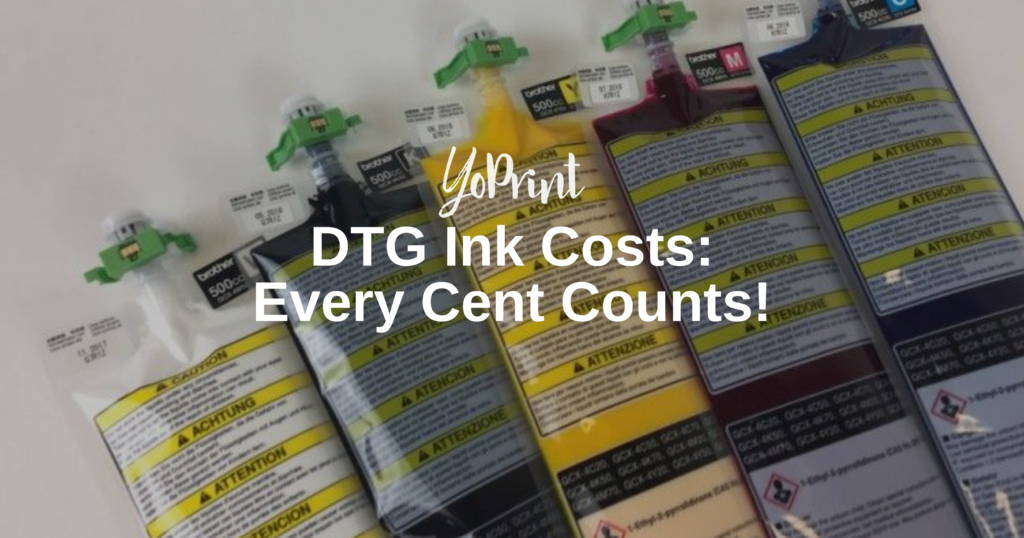“Ma!” my daughter yells, shoving her phone into my hand. On the phone is a screen printed t-shirt, and on the t-shirt is a picture of an axolotl eating a doughnut.
Under the axolotl, the shirt reads “Snacks-o-lotl!”
“I want THIS for my birthday!” my daughter tells me, jumping from excitement.
Admittedly, it’s a cute shirt, and it’s hard to find anything with her favorite animal, a weird lizard-fish called an axolotl, on it. So I bought her the shirt.
I realized then that, wow, we really owned a ton of screen-printed t-shirts. I had never even thought to wonder, how many washes does screen printing last on average?
Screen printed t-shirts made up not only a significant portion of my daughter’s wardrobe but my husband’s as well. So I set to work to figure it out.
I was pretty thrilled with the answer I found!
Now that we got that out in the open, let´s dive into some of the most common screen printing misconceptions regarding the duration of its ink and, some tips as to how we can make out printing t-shirt last longer.
When properly washed and dried, screen printing should last the life of the shirt. Fading can occur if the shirt isn’t properly cared for.
Do Screen Printed T-Shirts Last?

A Quick Explanation of Screen Printing
To understand how screen printing can last so long, it’s important to understand what screen printing is and how it differs from other methods of production.
If you’ve ever bought a t-shirt from a rock show, or one from your favorite theme park, there is a good chance it was screen printed.
Screen printing entails a lot of work, much more than you would think!
The sheer number of chemicals, ink brands, screen sizes, and cleaning supplies is mind-boggling.
Screen printing is one of the most common methods for creating custom garments.
The design possibilities are infinite!
It is relatively fast, produces a high-quality product, and can generate a quick profit after startup costs. It’s no surprise that companies all over the world use it to make their clothes.
The best fabric for screen printing is cotton. The natural cotton fibers hold up well during the printing process, absorb or adhere to the ink very well, and have the added benefit of being soft and breathable.
To put it simply, screen printing is the method of using a screen stencil to apply ink to a t-shirt or other fabric.
A quick overview of the screen printing process is as follows:
- The t-shirt is first stretched out tautly, where it will remain stretched through the screen printing duration. The ink is then pressed through the screen stencil, either by hand or with a machine.
- Depending on which ink is being used, multiple layers of ink may be required. The design is achieved because the ink will only go through the screen where your design is located, and nowhere else. This allows for a precise, eye-catching design.
- Once the shirt is printed, it’s time to dry, also called curing. The temperature that the ink must reach is dependent on the manufacturer, but the average seems to be around 320° F.
It’s very important that during this time the shirt isn’t moved around too much! No one wants bleeding ink or a sloppy-looking shirt.
These are only the most basic steps of screen printing, but they should give you an idea of how screen printing works.
Duration Of The Screen Printing Process

The length of the screen printing process is determined by a variety of factors. The most time-consuming aspects of the process are usually set up and clean up.
Screen printing itself should take no more than five minutes per shirt, or even less if you use a machine.
The amount of time it takes for the ink to dry/cure is determined by the type and brand of ink used.
There are two main types of ink used in screen printing.
Plastisol Ink
Plastisol ink is thicker, and when applied to the garment, it won’t soak in. Instead, the ink will rest on top of the fabric.
This will make the garment not as soft, as you can physically feel the design on top of the shirt, but it can be printed on even the darkest colored fabrics and still be vibrant. Plastisol will also dry faster than water-based ink.
Water-based Ink
Water-based ink is thinner, and since it is made from water, it will soak into the fabric of the garment.
This makes for a much softer feel, but isn’t ideal for darker-colored shirts, as the ink is thinner, therefore not as opaque. Water-based ink will take longer to dry than plastisol.
DTG Printing: Does Screen Printing or Digital Printing Last Longer?

The short answer is: screen printing will last longer than digital printing, which is also known as direct-to-garment printing.
The other main method of custom shirt production is direct-to-garment or DTG printing. DTG printing has its pros and cons, just like screen printing.
DTG is when an image or design is printed directly onto the shirt. A DTG printer is like your at-home paper printer, but much larger. Though DTG printing is better at printing finer details than screen printing, it falls short in terms of durability.
Since the DTG ink is sprayed right onto the fabric, it does not adhere to the fibers the way that screen printing ink does.
If the right ink is used, screen printed shirts will last a very long time without fading. Even with the best ink, DTG can only last a few dozens of washes at most.
For fast, detailed designs, DTG printing isn’t a bad choice. If you’re like me, and you want your clothing purchases to last as long as possible, screen printing is the way to go.
Also Read – Entry-Level DTG Printer Buying Guide 2020
Making Your Screen Printed Shirt Last
Now, let´s list some very effective tips I´ve learned over the years to help make your screen-printed shirt last as long as possible and debunk some screen printing misconceptions.
There are a few techniques you can use to really extend the life of your shirt!
Cold Water Wash
This is a tip that will help you maintain the best possible condition for all of your clothes, not just your screen printed shirts.
Washing your clothes in hot water can strip the color from them and ruin them much faster than washing them in cold water.
The screen printing ink will last longer if you wash your shirts in cold water.
Turning Inside Out
Another important aspect of screen-printed shirt care is turning the shirt inside out before washing.
This keeps the shirt’s design from being ruined by other clothes in the wash or snagging on something in the machine.
Hand Wash
When possible, hand wash your screen-printed shirts. Hand washing is by far the gentlest way to wash clothes. If you have to wash your shirt in the washer, use a delicate cycle.
Gentle Detergent and No Bleach
Avoid over-soaping your screen-printed shirt and never use bleach. By weakening the fabrics, these harsh soaps and chemicals will shorten the life of your shirt.
Bleach, in particular, can wreak havoc on a screen-printed shirt. The bleach can make the ink appear splotchy, and will cause the ink to degrade.
Low Dry or Hang Dry
If you must put your shirt in the dryer, run it on the lowest tumble dry setting. The best way to dry a screen printed shirt safely is by hanging it to dry. Avoid excessive heat when possible!
No Liquid Fabric Softener
Unfortunately, screen-printed shirts and liquid fabric softeners do not mix. The chemicals in the fabric softeners can degrade the screen printing ink, causing it to crack.
Dryer sheets are safe though, so you don’t have to sacrifice all your favorite laundry scents.
No Ironing
The screen printed design on your garment can be damaged by any kind of heat. Ironing screen printed designs increases the chance of cracking, and should be avoided if at all possible.
If ironing is needed, avoid using any steam. When ironing, place a towel or other protective layer over the screen-printed shirt to prevent direct contact between the iron and the shirt.
Follow these directions the best that you can, and you will be shocked at how long your screen printed shirts will stay looking new. It’s worth the time and effort!
Will Screen Printing Ink Wash Out?

While it is uncommon for screen printing ink to wash out, it does happen on occasion.
Since there are two main types of ink used in screen printing, the question has two responses.
Water-Based Ink
Water-based ink is the newer ink on the scene. Unlike plastisol, it doesn’t sit on top of the shirt fiber. Instead, it soaks into the garment, altering the fiber itself instead of covering it.
This has the benefit of feeling much softer to the touch than plastisol-based inks and allowing for more detail. A shirt printed with water-based ink will be much more breathable than one printed with plastisol.
Water-based inks also won’t chip or crack as plastisol-based inks can.
The disadvantage is that the drying/curing time of water-based ink is significantly longer than that of plastisol. If not properly cured, water-based ink will fade quickly in the wash.
Another shortcoming of water-based ink is that it isn’t ideal for dark-colored garments.
Since water-based ink is thinner and soaks into the fabric instead of covering it, the ink won’t show up on the darkest of fabrics.
If you’re a water-based ink user, stick to white, beige, and other light-colored shirts for bases.
Water-based ink will not wash out of a shirt if applied correctly. If done correctly with high-quality ink, water-based ink screen printing can last as long as plastisol ink screen printing, but there is more margin for error.
Related Article: Pro Tips for Washing Screen Printed T-Shirts
Plastisol Ink
When people picture a screen printed shirt, they are usually thinking of plastisol. This ink, which has been the standard of the screen printing world for a long time, is actually a plastic polymer.
Since plastisol is technically solid, it will not sink into the fabric of the shirt, but instead binds permanently to the fibers and lies on top. This is why plastisol can be used on shirts of any color.
Even on a jet black shirt, plastisol will be as brilliant as ever. The brightness of plastisol can’t be beaten.
Both water-based inks and plastisol ink are finicky when it comes to washing. The biggest concern with plastisol is that the design can chip or crack with too much heat or rough laundering.
While water-based ink may be softer to the touch, plastisol cures much faster and is easier to work with overall. Just like water-based ink, properly applied plastisol will not wash out.
Reasons for Screen Printing Ink to Wash Out
Even though both types of ink are meant to be colorfast, there are unforeseen circumstances that can cause your favorite screen-printed shirt to fade.
I’ve been blessed with naturally soft water at my house, so I’ve never had to deal with hard water affecting my washing. Come to find out, it can really damage screen printed shirts!
Some of the biggest enemies to screen printed shirts are:
Hard Water
A threat to your shirt that you may have never considered is hard water. Hard water, which is a high mineral content in tap water, can cause a screen printed design to rapidly deteriorate.
The minerals in the water can actually cause the inks to break down, making colors bleed and run.
Under Cured Ink
As I mentioned before, making sure your screen printed shirt becomes fully cured is imperative. If the ink isn’t fully cured, it can crack, fade, or even wash out completely.
Don’t rely on touch alone to find out if your screen printing is cured; the ink must meet the manufacturer-specific temperature.
Fibrillation
Fibrillation occurs when the fibers underneath the ink begin to break through, sticking up through the design.
A number of things can cause fibrillation, ranging from using cheap ink to the t-shirt being made from the wrong material.
Your best bet to prevent fibrillation is to make sure that high-quality inks are used and the t-shirt has a high cotton content.
Always check for washing instructions on the shirt tag! High-quality, well-cared-for screen printed t-shirt designs will last as long as the shirt itself.
How Many Washes Do Screen Printing T-Shirts Last?
When you live with children who love cool, exclusive t-shirts and a partner who is a fan of many bands, video games, and movies, and has the shirts to match, washing screen printed t-shirts becomes a natural part of life.
If you’re like me and want to do as little laundry as possible, it’s tempting to toss everyone’s screen printed t-shirts in with the towels and jeans in the washer.
I’ve learned the hard way that no one is pleased when their favorite shirt is ruined due to my impatience with the laundry.
So I took it easy and washed everyone’s screen-printed shirts properly. Hand-washed in cold water and hanging to dry. Surprisingly, even after over ten washes, they all looked brand new!
It’s impossible to put a firm number on how many washes will a screen printed shirt last, but I know now that a screen printed t-shirt cared for correctly will hold up for a very long time.
On the other hand, a screen printed t-shirt washed with a full load of random laundry with harsh detergents and put into the dryer on high heat may only survive a dozen or so launderings.
Treat your screen-printed t-shirts like the works of art that they are, and you can keep them as long as you please!
Final Thoughts
Going to concerts is one of my favorite pastimes, and I make it a point to purchase a concert t-shirt at each one. Almost all of these t-shirts are screen printed.
It’s because of the screen printing process, and the careful attention that I paid while washing them, that I still have t-shirts from concerts I attended in high school that look like I bought them yesterday.
A quality screen printed shirt will never fade in the wash as long as it’s cared for, and though the steps can seem tedious, with some practice it will seem like second nature.
It’s rare to come across a piece of clothing that you can be sure will last. I’ve taken a favorite blouse or pair of leggings out of the dryer countless times, just to discover the lovely pattern fading and worn. It’s aggravating, and it’s not good for my wallet!
At the very least, I can rest easy knowing that my screen-printed shirts will stick around!
If you’re still wondering how many washes screen printing can last on average, the answer is, as long as you take care of it!
Happy washing!


